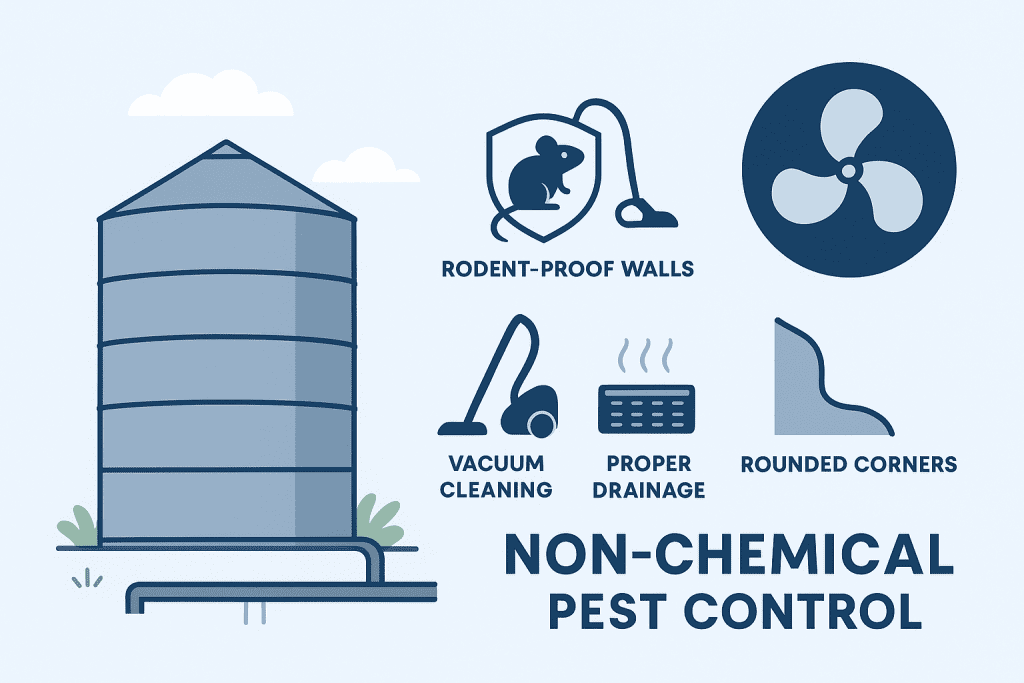Non-chemical disinfestation is no longer just a futuristic idea—it is a practical and necessary approach for modern grain storage and processing. Implementing non-chemical methods in rice mills and steel silos has proven effective in maintaining hygiene, preventing infestations, and reducing dependence on chemicals, all while ensuring sustainable operations.
In this blog, we share key design and operational strategies for achieving pest-free storage facilities without relying on harsh chemicals.
1. Structural Measures for Pest Prevention
Cattle Traps at Facility Entrance
Installing a cattle trap at the entrance helps remove mud, dirt, and potential contaminants brought in from outside, reducing the risk of cross-contamination.
Rodent-Proof Boundary Walls
Mice can typically dig burrows up to 30 inches deep. Designing boundary walls with this in mind, along with a smooth, tile-like finish, makes it difficult for rodents to enter the facility.
No Greenery Around the Plant
Plants and shrubs attract insects. Keeping the facility area free from greenery reduces insect infestation risks.
Proper Drainage Systems
Water stagnation provides a breeding ground for pests. A well-designed stormwater drainage system ensures water does not accumulate, keeping the facility dry and safe.
Rounded Wall Corners
Walls with rounded corners prevent dust accumulation, which can harbor insects and pests. Smooth surfaces combined with proper hygiene practices limit infestation opportunities.
2. Hygiene and Cleaning Practices
Vacuum Cleaning Over Brooming
Regular vacuum cleaning removes dust and insect eggs effectively. Unlike sweeping, which can spread dust and infestations, vacuuming ensures early control of potential pests.
Preventive Monitoring
Monitoring preventive fumigation helps assess its efficacy. This proactive approach allows the facility to avoid reactive or curative chemical treatments, reducing overall chemical use.
3. Non-Chemical Disinfestation Technologies
Chilling, Nitrogen, and Ozone (O₃) Treatments
Advanced non-chemical methods like chilling, nitrogen enrichment, and ozone application can control pests without harmful chemicals. A cost-benefit analysis helps identify the most effective and efficient method for your facility.
Conclusion
Designing and operating grain storage facilities with non-chemical disinfestation strategies ensures safer, more sustainable storage. By combining preventive design, strict hygiene practices, and modern technologies, facilities can maintain high standards of food safety while significantly reducing chemical usage.
Sustainability, efficiency, and hygiene go hand in hand when preventive measures are prioritized.


I like this weblog its a master peace ! .
You can contact us on munishwar.vasudeva@lotusharvestec.com for more info.